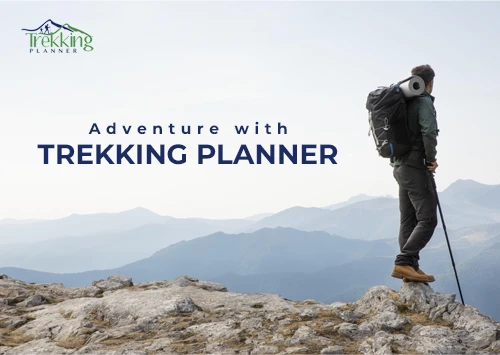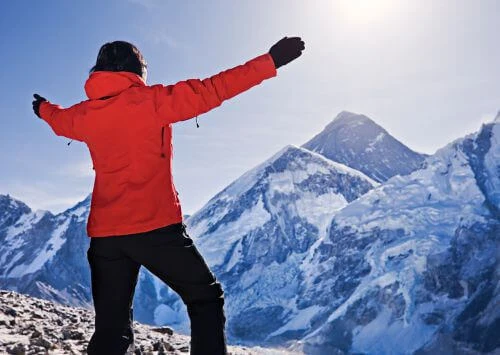Tea House Trekking in Nepal, So, what exactly is a tea house trek?
A Tea House Trekkking is one of the many ways you can trek in Nepal. Nepal with its beautiful mountains, great cities, warm and hospitable people offers you varieties of ways of trekking. You can go the snowy mountains or you can go the hills and have a wonderful experience. A tea house trek starts early in the morning around 8 A.M or 9 A.M in a tea house. You get served breakfast around 7 A.M and start your journey. Then you trek for around 3 hours and take a break for lunch. After lunch, you get back to trekking for around 3 hours again and finally arrive at your destination. You take dinner at your preferred time ( generally at 8 P.M ), get a good night’s sleep and start your journey the next day.
A Tea House Trek is a fun way of getting accustomed to the culture of Nepal.
Also it is extremely cheap!! It not only helps you to save time, it also helps you to get to know people along your trek as well.
Now that you know the basics of a Tea House Trek, let’s get into the details of teahouse treks and know what services you expect there.

FOOD
Nepalis food : Food breathes life in you. Without constantly energizing your body, you will feel constantly exhausted.
Nepalese food gives you a lot of energy while trekking. Nepalese food is very rich in carbohydrates. minerals, proteins as well as vitamins.
Breakfast : Breakfast usually comprises of bread, eggs and potato. That will be perfect for starting your trek. They’ll not let you feel very full and at the same time, keep you energized. You can also order a big glass of milk if your energy levels are down.
Don’t forget the Nepalese tea. Nepalese tea is offered in various ways. You can have milk tea, black tea, herbal tea, ginger tea, lemon tea, masala tea and a few other variations. If you are on a week-long trek, you can try a new variety every day.
You also can find porridge or corn-flakes as breakfast. Although they are not available everywhere, they are becoming more and more popular forms of breakfast.
Lunch : ‘Dal Bhaat‘ is usually served as lunch. Daal is a liquid form of pulses. Chickpeas, dry peas, lentils and dry beans are the most commonly available form of pulses in Nepal. You can also be served a variety of legumes. Legumes and pulses are high in protein and fiber.
‘Bhaat’ refers to steamed rice. If you like fried rice, you can order that too. Seasonal vegetables will be served along with ‘Dal Bhaat’. You can also try pickles that come in various guises.
Dinner : Dinner is similar to lunch. But growing hospitality studies and industry in Nepal has resulted in the availability of a range of other food such as pasta, pizza, and lasagna. Local guides will have very good idea about the specialty of the places you go to.

Teahouse Accommodation.
The accommodation in tea house treks is good too. They generally have two beds ( or a large bed) with pillows, blankets and, mattresses.
However, during the winters it can be extremely cold if you are only reliant on the blankets provided. You should have your sleeping bags with you for warmth.
An increase in altitude might bring about a decrease in facilities such as good flushing ( you might have to use a bucket of water to flush!!) and good insulation.
Costs of Teahouse treks in Nepal.
Food is very cheap in Nepal. A typical Nepalese breakfast will cost you an average of 1–2 $ ( NRS 100-200). Similarly, lunch and will be anywhere from 2–5 $. However, the prices might reach upto 10–15 $ if you are trekking in the Everest Base Camp Region.
It becomes increasingly difficult to transport goods at higher altitudes. Different teahouses in the Everest Region have different altitudes ranging from 3200 meters to 5500 meters. The transportation facilities are scarce and life is difficult. So you should expect to pay more as you trek higher up the mountains.
Accommodation prices in tea houses are comparable to the price of food. Accommodation in tea houses will cost somewhere between 3$ ( NRS 300 ) – 5$ ( NRS 500 ). If you are going off season, you’ll find accommodation even cheaper. You might be able to bargain it down to 1$ ( NRS 100 ) – 2$ (NRS 200)
As with the food prices, expect higher costs as you travel to higher altitudes. In snowy conditions, accommodation can cost you 10$ ( NRS 1000 ) as well. And if you are looking for Internet facilities in the room, the price might be NRS 1500 and upwards.
Gear for teahouse trekking in Nepal.
The gear you will be carrying depends upon the time you trek and the places too. Here is a list of things you need to carry at all times irrespective of the weather or the places you want to trek.
Backpack : The most essential of all items–your backpack. A storage for all your belonging, backpacks should be water resistant, accommodating, having compartments, fitting your body, have good shoulder straps and weight distribution.
If you are looking for hiking in the summer or the monsoon season, you should get a waterproof hiking backpack. Also check if you can grab items and put it back in the backpack with ease. You wouldn’t want to get irritated shuffling things constantly.
Shoes : As you will be heading for trekking in difficult terrains, shoes are of the most importance. Trekking boots that are water-resistant, durable, fitting perfectly and be able to protect you from muscle aches, especially in the ankle are necessary.
You will also need shoes while preparing for Trekking in Nepal. If you are looking for longer treks like the Kanchenjunga Base Camp trek or Jiri to Everest Base Camp trek, you need to start an exercise routine. And if you are suffering from Plantar fasciitis or other similar heel problems, good running shoes for exercising will be utterly important.

Clothing : You wouldn’t want to feel that you have not packed well enough to feel warm and comfortable in the mountainous treks in Nepal. Pack a down jacket, a couple of t-shirts, long sleeve t-shirt, woolen gloves, socks, a couple of underwear, waterproof trousers and shorts. Depending upon the length of the trek, the number of clothes should not be more than absolutely necessary. You can read more about a list of things all the clothing and equipment you will need .
Other : Chargers become indispensable in teahouse treks. All the places of accommodation are not equipped with electricity. And the problem of electricity gets worse with altitude. Charging with solars can be extremely tiresome as you might have to form long queues and pay 2$ an hour for charging.
So carry a solar charger when possible. Good backpack chargers can come in handy to charge your devices when you are in high altitude.
A tent and trekking poles might be useful to you if you are looking forward to camping. Don’t forget to keep first aid kits, body lotions, lip balms.
when to visit in Nepal.
Nepal has four seasons. According to weather of these seasons, you need to adjust when you want to go for tea house trek. September- November and March-May are peak trekking seasons in Nepal. These are the months where it is neither too cold nor too hot. They’re dry and offer great mountainous sceneries.
You could also trek from December to February if you are acclimatized to trekking in colder seasons. Trekking during this time will be the most scenic. If you have seen glorious pictures of the sun glinting the mountaintops, chances are that those are pictures taken during this season.
Some Tips for trekkers.
Explore a range of travel companies in Nepal and choose from the packages that you are most comfortable with. Do a cursory check of the guide that will be going on with you and see if he seems friendly and hospitable.
A travel insurance is the best way to prevent yourself from any difficulties that you might have while traveling. That will keep your personal belongings and gadgets recoverable.
Explore the culture along the way. There will only be a handful of people in the tea houses, most of whom will be willing to have a smart and funny chat. Amusing foreigners is something Nepalese look forward to.
Try learning a handful of Nepali words. ‘ Dhanyabad’ for Thank You, ‘ Namaste’ for Hello and ‘ K Chha?’ for ‘ How are you doing’ might yield friendly responses from locals and foreigners alike.
Travel with friends. Friends will come in handy in case of some physical or mental stress you might experience while traveling. A map will be important to locate the direction and the places along the trekking trail.
Conclusion.
Tea House Trekking will make your travel all the more wonderful without breaking your bank. It is also a fun way of getting intimate with the people in the country and the richness of Nepalese culture.
With all the many wonderful places ( including Everest and Annapurna ) that have tea house trekking facility, you should focus on planning your trip right away.
So get on board for a tea house trek and come out a more complete, well- learned and well–cultured person.
If traveling to Nepal is something you want to do, you can contact us. We’ll be more than happy to talk to you.





